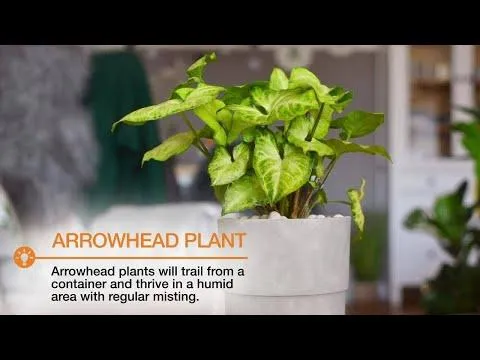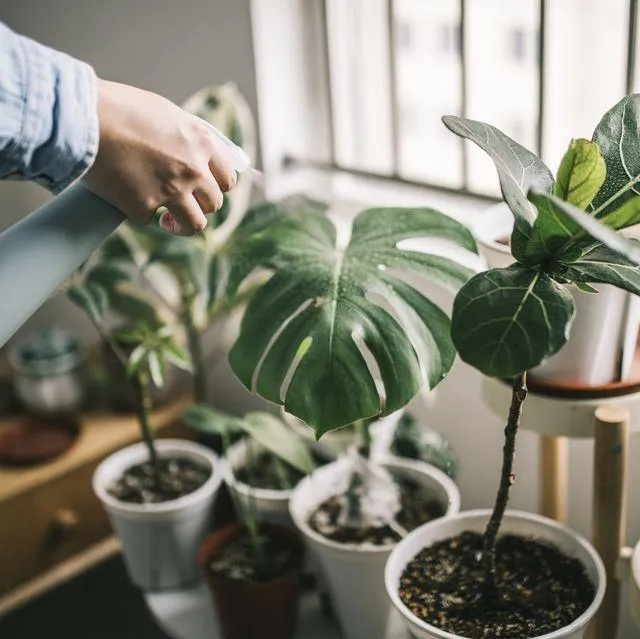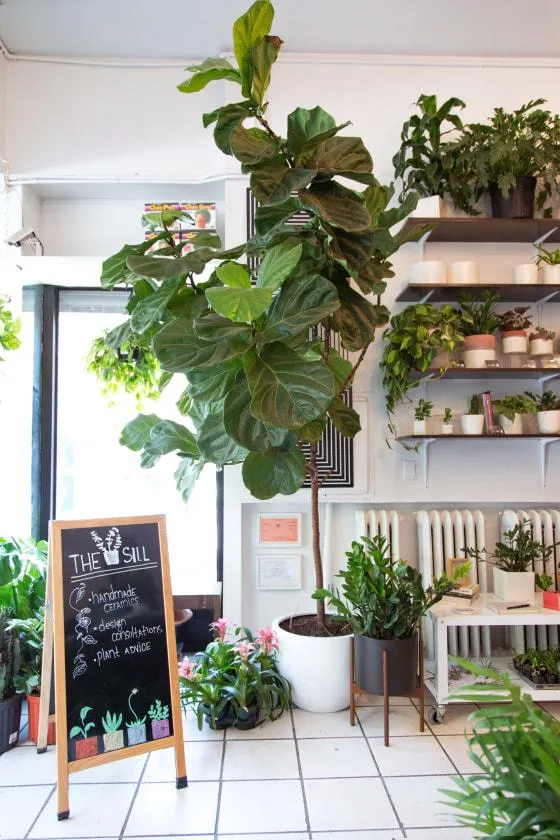The Best Trees to Grow Indoors: Your Complete Guide
Wondering which trees would thrive inside your home? From my experience as an indoor plant enthusiast, growing trees indoors can be very rewarding – but you need to pick the right species. In this comprehensive guide, I’ll reveal the top tree varieties suited for indoor conditions and answer all your questions about caring for a miniature indoor forest.
Why Grow Trees Indoors?
There are several excellent reasons someone might want an indoor tree:
- Add natural beauty and greenery to small spaces like apartments. Indoor trees canbrighten up any room!
- Enjoy the calming influence of trees even without a yard. Their presence hasbeen shown to lower stress.
- Keep a connection to nature during long winter months or in urban areas withoutparks. Houseplants satisfy our innate need to interact with flora.
- Certain types of houseplants even purify indoor air, removing toxins like formaldehydeand benzene. Talk about getting multiple benefits from one plant!
At the same time, indoor trees require compromises. Choose wisely based on your care abilities and growing conditions.
Top Tree Varieties for Indoors
Here are some of the best indoor tree options to consider:
Dwarf Umbrella Tree (Schefflera arboricola)
Nicknamed the “lucky plant,” this is one of the easiest trees for beginners. Its dense, rounded shape resembles an open umbrella. Umbrella trees thrive in medium to low light and like semi-moist soil. They can grow 3-6 feet tall indoors. Its thick, glossy leaves are very stylish.
Weeping Fig (Ficus benjamina)
With its cascading branches and small, shiny leaves, this is arguably the most versatile indoor tree. Weeping fig tolerates low light and various environments. It grows slowly to a maximum of 10 feet, making it suitable even for small homes. Keep it away from pets as some varieties are toxic if ingested.
Dwarf Date Palm (Phoenix roebelenii)
Add an tropical flair with this adorable miniature palm. It stays compact at 2-4 feet tall. Dwarf date palms prefer humidity and bright, indirect sunlight. Their slow growth appeals to novice gardeners. The palm fronds give a sense of escape to warmer destinations!

Japanese Maple (Acer palmatum)
Despite demanding conditions, Japanese maples can succeed indoors for bonsai aficionados. Choose a dwarf cultivar no more than 2 feet tall. Providing lots of light and selective pruningDevelops their striking leaf patterns over years. This project tree challenges skilled plant parents.
Tips for Caring for Indoor Trees
Now that you have an idea of top tree selections, here are some tips for growing them indoors successfully:
Light
Most trees need bright, indirect sunlight for at least six hours daily. Consider supplementing with grow lights in winter. Position trees near south or west-facing windows.
Water
Check soil moisture daily and water when the top inch is dry. Use lukewarm water and do not allow the tree to stand in water. Under-watering causes more issues than over-watering for trees.
Humidity
Many trees like high humidity. Group plants together or use pebble trays to raise ambient moisture levels. Consider a humidifier, especially during winter heating season. Too dry air stunts growth.
Temperature
Most trees thrive between 65-80°F. Keep from drafts near doors/windows. Watch that heaters don’t dry out trees as happens all too often every winter. Aim for stable, moderate indoor temps.
Soil
Well-draining potting mixes are key for trees’ root systems. I like brands containing Bark, Perlite or Vermiculite. Re-pot young trees into the next pot size up every 2-3 years as needed for elbow room.

Fertilizer
Apply liquid, all-purpose fertilizer at half-strength every 2-4 weeks during spring/summer growth periods. Scale back or skip fertilizing dormant trees in winter.
Pruning
Pinch back new growth to maintain tree forms and sizes. Remove dead or diseased leaves/branches. Be cautious not to over-prune and shock trees by removing too much at once.
Common Problems and Solutions
Like all houseplants, trees can run into their share of issues. Here are some frequent complaints I’ve dealt with and how to fix them:
Leaf Drop
This may be caused by over-watering, underwatering, low humidity or pests. Improve care in the deficient area and remove damaged foliage.
Non-Flowering
Trees may refuse to bloom if under stress from poor light/care. Ensure growing conditions are optimum before concluding it is not a flowering variety.
Pests
Check for signs of spider mites, scale insects or mealybugs on foliage. Treat affected areas delicately using neem oil or insecticidal soap.
Leaf Discoloration
Signs like yellowing leaf edges signal issues like nutrient deficiency, salts build up or root rot from soggy soil. Check roots and address root cause.

In summary, with some experience you too can have a mini indoor jungle in your home! Growing trees indoors not only jazzes up an environment but also nurtures the hobbyist’s green thumb. Let me know if you need any other indoor gardening advice.
Best Trees to Grow Indoors
| Tree | Water Needs | Light Needs | Size | Care Level |
|---|---|---|---|---|
| Aloe Vera | Allow soil to dry between waterings | Bright, indirect light | Approximately 3 feet tall and wide | Low |
| Bamboo Palm | Water when top inch of soil is dry | Bright, indirect light | Height ranges 5-12 feet | Low |
| Chinese Evergreen | Keep soil slightly moist | Bright, indirect light | Height ranges 2-6 feet | Low |
| Corn Plant | Water when top inch of soil is dry | Bright, indirect light | Height ranges 3-6 feet | Low |
| Dracaena | Water when top inch of soil is dry | Bright, indirect light | Height ranges 3-8 feet | Low |
FAQ
-
What types of trees can grow indoors?
There are quite a few tree varieties that do well inside homes and apartments. Some good options are:
- Chinese evergreen, or Aglaonema. These trees have thick, dark green leaves and don’t need much sunlight. They’re basicallyCarefree.
- Dwarf date palm. Date palms have a cool, tropical look. You gotta give them plenty of sunshine though.
- Fig trees. Figs need full sun and can grow to a decent size indoors. But their branches are sorta delicate.
- Dwarf citrus like lime, lemon or orange trees. Citrus trees offer sweet-smelling flowers and fruits. But they require tons of sunshine.
- Jade plant. They’re really tough plants with thick, fleshy leaves. Jade trees don’t demand much care.
- Dwarf umbrella tree. Umbrella trees have interesting fan-shaped leaves. They grow slowly and handle low light fairly well.
- Dracaena or corn plant. Dracaenas come in many varieties and colors. Their attractive leaves hold up well indoors.
Which variety grows the fastest?
Fig trees and citrus trees seem to grow at a pretty quick pace when they’re inside. Maybe it’s because they have more motivation to seek out sunlight. But at the same time, many indoor trees grow quite slowly. It depends a lot On the care they receive.
How do I care for an indoor tree?
To keep an indoor tree doing well, make sure it gets adequate sunlight. Most trees need at least six hours of direct light daily. Water when the top inch of soil dries out. Feed monthly in the spring and summer with a houseplant fertilizer mixed at half strength. Repot trees only when their roots fill the container. Remove anybranches that touch walls or ceilings. On the other hand, don’t fret too much over an occasional dried leaf. Indoor trees are pretty forgiving as long as their basic needs are met.
Are some trees better for tight spaces?
Dwarf varieties or container trees usually work best in tight spaces. Look for compact forms of citrus, figs, or umbrella trees. Jade plants also stay quite small. Nevertheless, any tree will be limited by the amount of room you give it. Make sure to measure your available space carefully before choosing a variety. Compared to full-size trees, dwarfs are definitely your best bet for tiny areas.
What pests do indoor trees attract?
Unfortunately, scale insects, spider mites and mealybugs sometimes pay indoor houseplants a visit. Scale hides under leaf surfaces and sucks plant juices, weakening trees. Spider mites and mealybugs spin webs or secrete sticky honeydew. Watch for signs of pests like spots on leaves or webbing. At the same time, preventing dry conditions helps avoid infestations. Spot treatments with a soap and water solution usually does the trick. On rare occasions, pesticides may be called for. But with correct care, many pests are easy to manage.
Are there any varieties I should avoid?
Some trees are less than ideal for indoor growing. Bamboo, for instance, is basically impossible to control as it spreads vigorously. Most fruit trees outgrow containers rapidly. Fig trees can drop pollen which triggers allergies. Plants with poisonous leaves or sap like dieffenbachia shouldn’t be grown around small kids or pets. It’s wise to research a tree fully before planting. However, with the right choice most people enjoy houseplants. Consider your space, care skills and allergies before selecting a variety.

Do indoors trees live as long as outdoor ones?
In general, trees kept inside usually don’t last as long as those in the ground. Indoor conditions are less than ideal compared to nature. restricted room for growth, lower light levels and ordinary home temperatures can shorten a tree’s lifespan by quite a few years. On the positive side, bugs and diseases pose less of a threat indoors. And trees kept as bonsai live for decades. So with attentive care, houseplants can survive impressively long – sometimes over twenty years or more. It really comes down to meeting each tree’s needs as much as possible, I guess. But is having live trees inside worth the effort long term? You tell me.
